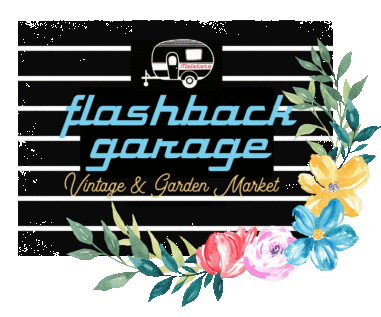Melstone, MT — Even if Victory Gardens from World War I and II were before your time, you’ve likely heard about those homefront gardens, unless you’ve been living under a rock. (No blame if that’s you; there are valid reasons to shut out the outside world!)
The concept has been rebooted in recent years, now pretty much encompassing any home gardens with a focus on growing food. Community gardens, the food-not-lawns movement, Permaculture food forests, backyard gardens, kitchen and culinary gardens, small greenhouses, balcony container gardens, vertical gardens, rooftop gardens, windowsill planters, hydroponics, and aquaponics… are all ways almost anyone can grow food on a small, local scale.
Here in rural Eastern Montana, we have a short growing season. There’s still snow on the ground mid-March, with likely more coming. The ground is frozen. While digging is a no-go for at least a few weeks, tentative signs of spring are emerging. The lilacs are budding and my wild roses are bare and thorny but perking up. Any day, I expect to see the green tips of my perennial patch of chives.

Another sure sign of spring is that my gardener friends and I are ordering seeds. Every year, I have leftover seeds in packets and have seeds saved from my previous harvest. I also let some plants like lettuce, carrots, borage, and calendula go to seed in place, ready to produce again the next year. I always think I won’t have to buy any more. When it’s suddenly almost spring, though, the seed and plant catalogs beckon and inspire me.
Having plants around makes me happy. Heck, even weeds can make me happy. (Edible and useful weeds is a topic for another post.) There’s evidence that getting your hands or feet in the soil (“grounding”) is not just satisfying; it’s healthy. (There are caveats of course. In a post-industrial brownfield, the dirt underfoot is not safe to play around in.)
If you can get outdoors now, and you don’t already have a garden, look around with an eye to growing some vegetables, herbs, and berries. The more space you have, the better, but starting with a manageable size plot is better than planning a huge garden that will overwhelm you. Generally, a plot or raised bed that’s more than 4 feet across will be difficult to reach across into the center for planting, feeding, weeding, or harvesting. If an outdoor space where you can maintain safe personal distance is not available, assess your indoor options for a window, balcony, or closet with a grow light.
During the pandemic now, some cities have designated outdoor farmers markets as “essential service” businesses where you can buy groceries, although this is not true everywhere. Community gardens may be permitted to open this spring; it’s too early to know. Whatever happens in the coming weeks and months, you have an opportunity now to start growing at least some of your own food. Sketch out a simple plan, or get creative and map out multiple areas at your home where you can plant seeds or seedlings. Take into account how much sun an area will get per day; plant accordingly or find a different location. In fact, you can even start seeds in trays indoors that you can set out later, or transfer to containers inside.
I tend to stay away from the big companies that sell GMO, non-organic seeds. I also limit my purchases from big box garden centers that sell patented varieties of plants that are illegal to propagate. I try to buy organic, heirloom seeds and plants, although I don’t always manage to do that.
Some of my favorite purveyors of non-GMO seeds are:
Strictly Medicinal Seeds (https://strictlymedicinalseeds.com/)
Caleb Warnock’s Renaissance Seeds (https://www.mcssl.com/store/calebwarnock)
Eden Brothers (https://www.edenbrothers.com/)
Baker Creek Heirloom Seeds (https://www.rareseeds.com/)
Seeds of Change (https://www.seedsofchange.com/)
Renee’s Garden (https://www.reneesgarden.com/), and
Mountain Rose Herbs (https://www.mountainroseherbs.com/).
If local nurseries are able to open for business this season, find one in your area that uses only natural sprays and plant food, and has plant varieties adapted for your region. Want to do some research first? Find unlimited demonstrations on YouTube. Check out Permaculture groups near you for ideas on growing healthy food naturally in your climate, using Nature’s own patterns. Read up on “companion planting”; it’s fascinating and fun.
By the way, if going organic is too much of an obstacle, you don’t have to be a purist. Just plant something, tend your garden indoors or outdoors, and watch it grow. Start simple and don’t stress. Don’t think you have a green thumb? It’s an acquired talent, and you will learn. It may not go smoothly, but that’s OK. Even the most experienced gardeners have surprises — good and not so good. So get a couple of cherry tomato plants, basil seeds, radish seeds, and garlic bulbs. Get some bags of organic potting soil if possible. If you don’t have a traditional plot, use grow bags or environmentally friendly containers, or build or buy an elevated indoor planter such as a vegtrug or cedar box on legs. Enlist the kids if you’re blessed with any of those amazing little perpetual motion machines! Give them seeds that they choose and their own section to plant. Start a compost pile or vermicompost bin if you can. Kids love worms!!!
Bottom line: just do it. It’s a great way to pass the time being active and useful. When you plant, grow, and eat fresh garden produce, you exert some control over your own little corner of our currently unsettled world, and you will literally reap the rewards.
— Adele
Adele Field is a writer and editor based in rural eastern Montana.

